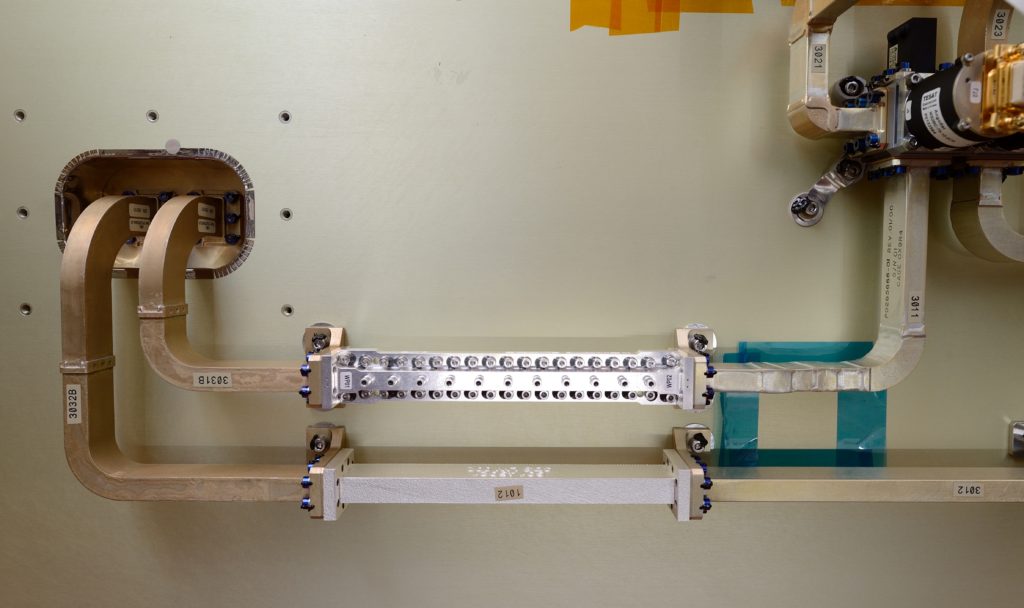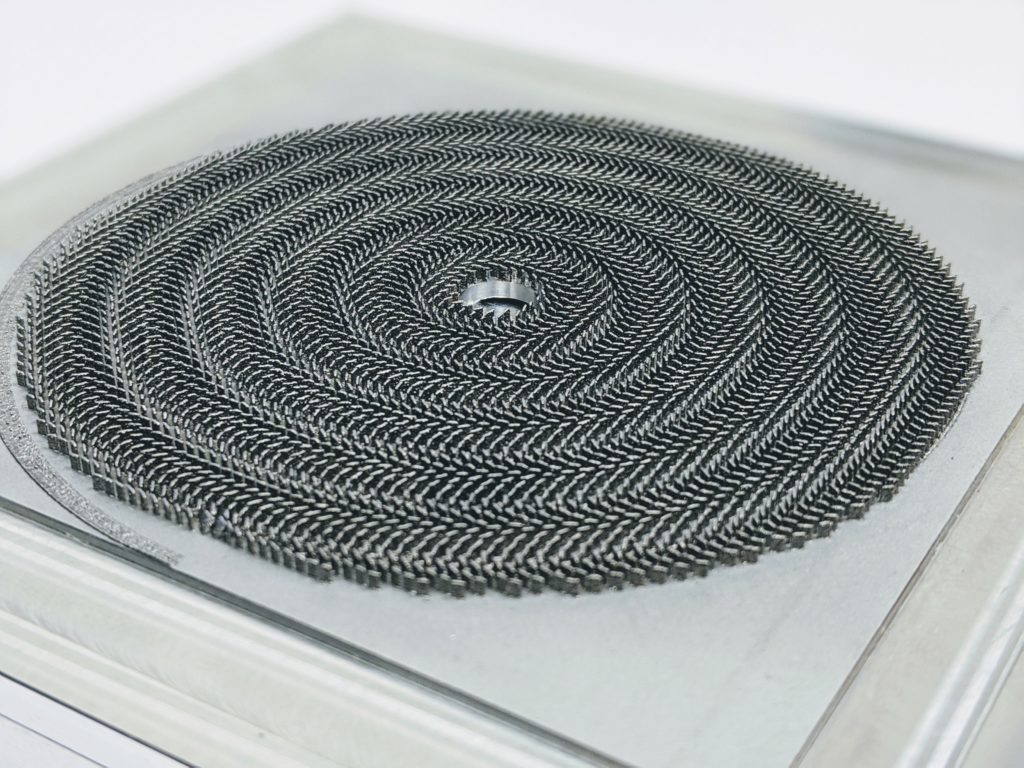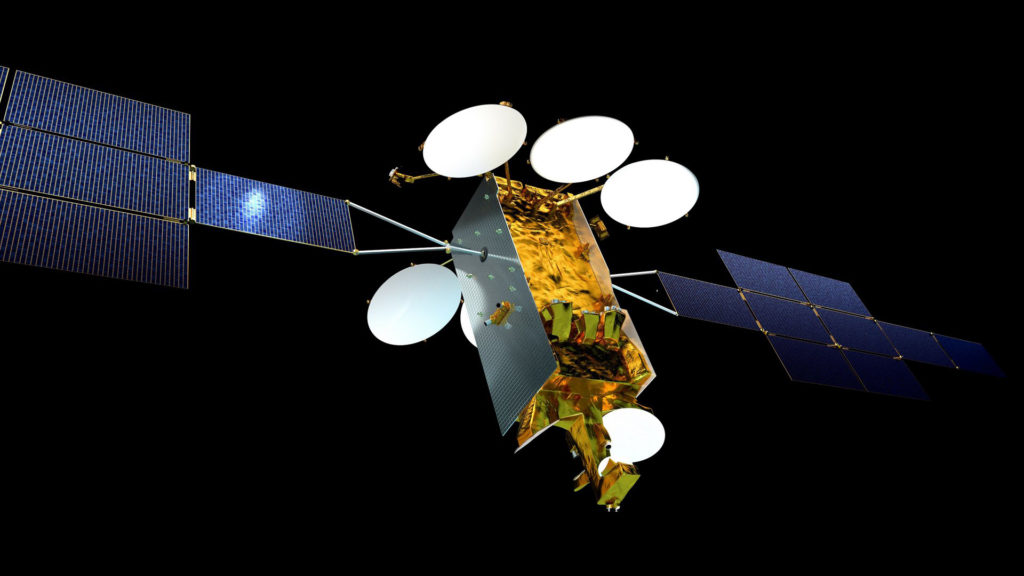Dr. Michael Shepard is Vice President of Aerospace & Defense at 3D Systems. He will be participating in Additive Manufacturing Strategies 2022, Panel 1: AM, Light-weighting and Aerospace.
The demand for satellite telecommunications services is rebounding toward strong growth following the impacts of COVID-19. With this comes the need to improve satellite performance and economy. Sending a vehicle into geostationary orbit can cost up to $20,000/kilogram, with a typical service life of 10–15 years. Technologies are required that can boost performance, reduce cost, weight, and volume, and drive improvements across design and supply chain processes. One increasingly important technology driving aerospace innovation is additive manufacturing (AM). With greater design and manufacturing flexibility, AM offers compelling opportunities to revolutionize critical elements of the aerospace workflow.
An exciting application of AM is the production of passive radio frequency (RF) hardware. This family of parts can receive, carry, filter, and transmit RF signals from earth to a satellite and back. Satellites must be equipped with the most efficient transmission technology, including directional antennas (to receive and transmit signals from and to earth), filters (to minimize signal noise from unwanted frequencies), and waveguides (waveguides transfer the signals inside the satellite with low losses). These elements feature complex designs and have exacting requirements for dimensional control, weight, volume, and surface quality. Producing these assemblies using conventional manufacturing is time-consuming and costly, and requires extremely specialized personnel.
In recent years RF industry leaders have begun to apply AM to RF components, improving flexibility to optimize for performance and system-wide efficiency. This results in reduced volume and weight, improved performance, and improvements in cost and delivery timelines.
Unitization is particularly important. In addition to the natural reductions in weight and volume that come with reduced part count, fewer parts mean fewer interfaces in the RF transmission chain, resulting in lower overall system losses. Fewer parts also mean more efficient assembly, reduced quality control costs, and a streamlined supply chain. In one application, Direct Metal Printing (DMP) was used to create a passive RF filter for on-orbit use resulting in a single part, versus 39 parts in a conventional unit, with a weight reduction of 50%.

The 3D printed RF filter designed by Airbus Defence and Space integrated into the satellite payload. The new filter reduces weight by 50% over the previous design.
DMP also allows RF designers to utilize shapes that are not possible with conventional manufacturing processes. With DMP, very efficient filter designs utilizing highly organic, contoured shapes can be manufactured to optimize performance.
Typically, with respect to satellite design, weight savings are seen as the most desirable optimization. Weight is critical, but overall volume is important as well. Volume reduction in waveguides and filters potentially allows for more telecommunications channels on a satellite inside a given volume and weight envelope. The more compact an RF payload design is, the more channels can be added, enabling more services. Additive manufacturing can also enable advances in SmallSat and CubeSat platforms as in the case of all-metal metasurface (MTS) antennas where the feed can be integrated into the center of a planar antenna as opposed to a traditional parabolic reflector design with a deployable horn.

“In collaboration with NASA’s Jet Propulsion Laboratory and the Univ Rennes, CNRS, IETR – UMR 6164, 3D Systems produced several thousand elements of this Metasurface (MTS) antenna on a single baseplate. Low profile and low mass make this an ideal Ka band antenna type for SmallSats and CubeSats.” (Reference: D. González‐Ovejero, O. Yurduseven, G. Chattopadhyay and N. Chahat, “Metasurface Antennas: Flat Antennas for Small Satellites,” in CubeSat Antenna Design, IEEE, 2021, pp.255-313.)
These capabilities can be most effectively demonstrated by briefly exploring a real-world use case.
Functional design enhances RF system performance
Airbus Defence and Space partnered with 3D Systems to produce the first 3D printed RF filter that was validated for use in commercial telecommunications satellites. The project was built upon research funded by the European Space Agency (A0/1-6776/11/NL/GLC: Modelling and Design of Optimised Waveguide Components Utilising 3D Manufacturing Techniques) and demonstrates AM’s ability to enable design innovation for aerospace parts that haven’t changed appreciably in decades.
RF filters are traditionally designed based on libraries of standardized elements, such as rectangular cavities and waveguide cross-sections with perpendicular bends. Shapes and connections are limited by typical manufacturing processes such as milling and electrical discharge machining. As a result, cavities for RF filters typically need to be machined and bolted together. This increases weight, adds an assembly step, and requires extra quality assessment. Designing the parts for AM enabled Airbus to explore complex geometries at no additional manufacturing cost. A high-capacity satellite such as the Eutelsat KA-SAT manufactured by Airbus carries nearly 500 RF filters and more than 600 waveguides. Many of these are custom-designed to handle specific frequencies.
Building upon its initial work, the Airbus manufacturing team in Portsmouth, UK, developed innovative designs for additively manufacturing switch assembly networks. 3D Systems was brought onto this project early to provide input and support for application development and prototyping, with continued engagement throughout qualification and industrialization. AM was selected for this project due to the design freedom, weight reduction, part performance optimization, and schedule reduction it enables. Airbus also cited major labor savings during assembly enabling their teams to focus on value-added tasks, as well as a significant reduction in the number of individual parts required. The passive RF hardware is designated for two Eurostar Neo spacecraft that will join the in-orbit fleet of Eutelsat.

The final switch assembly networks were printed in an aluminum material on DMP Factory 350 machines at 3D Systems’ Customer Innovation Center in Leuven, Belgium.
About the Author
 Dr. Mike Shepard is an aerospace metallurgist, specializing in fatigue and fracture. Dr. Shepard spent 16 years at Air Force Research Laboratory in Dayton, Ohio where he led the Behavior and Life Prediction Section and ultimately the Aircraft Structures Technology Branch. During his time in these organizations, he led efforts to both develop new technologies and solve field issues for turbine engines and airframe structures. Dr. Shepard was most recently with MTS Systems where he ran their Aerospace Testing business and served as the co-chair of the Additive Technologies Team. He now leads 3D Systems’ Aerospace & Defense Segment, helping customers rapidly design and produce additively manufactured components for aerospace and defense applications, accelerate the certification process, and optimize their entire supply chain.
Dr. Mike Shepard is an aerospace metallurgist, specializing in fatigue and fracture. Dr. Shepard spent 16 years at Air Force Research Laboratory in Dayton, Ohio where he led the Behavior and Life Prediction Section and ultimately the Aircraft Structures Technology Branch. During his time in these organizations, he led efforts to both develop new technologies and solve field issues for turbine engines and airframe structures. Dr. Shepard was most recently with MTS Systems where he ran their Aerospace Testing business and served as the co-chair of the Additive Technologies Team. He now leads 3D Systems’ Aerospace & Defense Segment, helping customers rapidly design and produce additively manufactured components for aerospace and defense applications, accelerate the certification process, and optimize their entire supply chain.
Subscribe to Our Email Newsletter
Stay up-to-date on all the latest news from the 3D printing industry and receive information and offers from third party vendors.
You May Also Like
Precision at the Microscale: UK Researchers Advance Medical Devices with BMF’s 3D Printing Tech
University of Nottingham researchers are using Boston Micro Fabrication‘s (BMF) 3D printing technology to develop medical devices that improve compatibility with human tissue. Funded by a UK grant, this project...
3D Printing Webinar and Event Roundup: April 21, 2024
It’s another busy week of webinars and events, starting with Hannover Messe in Germany and continuing with Metalcasting Congress, Chinaplas, TechBlick’s Innovation Festival, and more. Stratasys continues its advanced training...
3D Printing Webinar and Event Roundup: March 17, 2024
It’s another busy week of webinars and events, including SALMED 2024 and AM Forum in Berlin. Stratasys continues its in-person training and is offering two webinars, ASTM is holding a...
3D Printed Micro Antenna is 15% Smaller and 6X Lighter
Horizon Microtechnologies has achieved success in creating a high-frequency D-Band horn antenna through micro 3D printing. However, this achievement did not rely solely on 3D printing; it involved a combination...





























